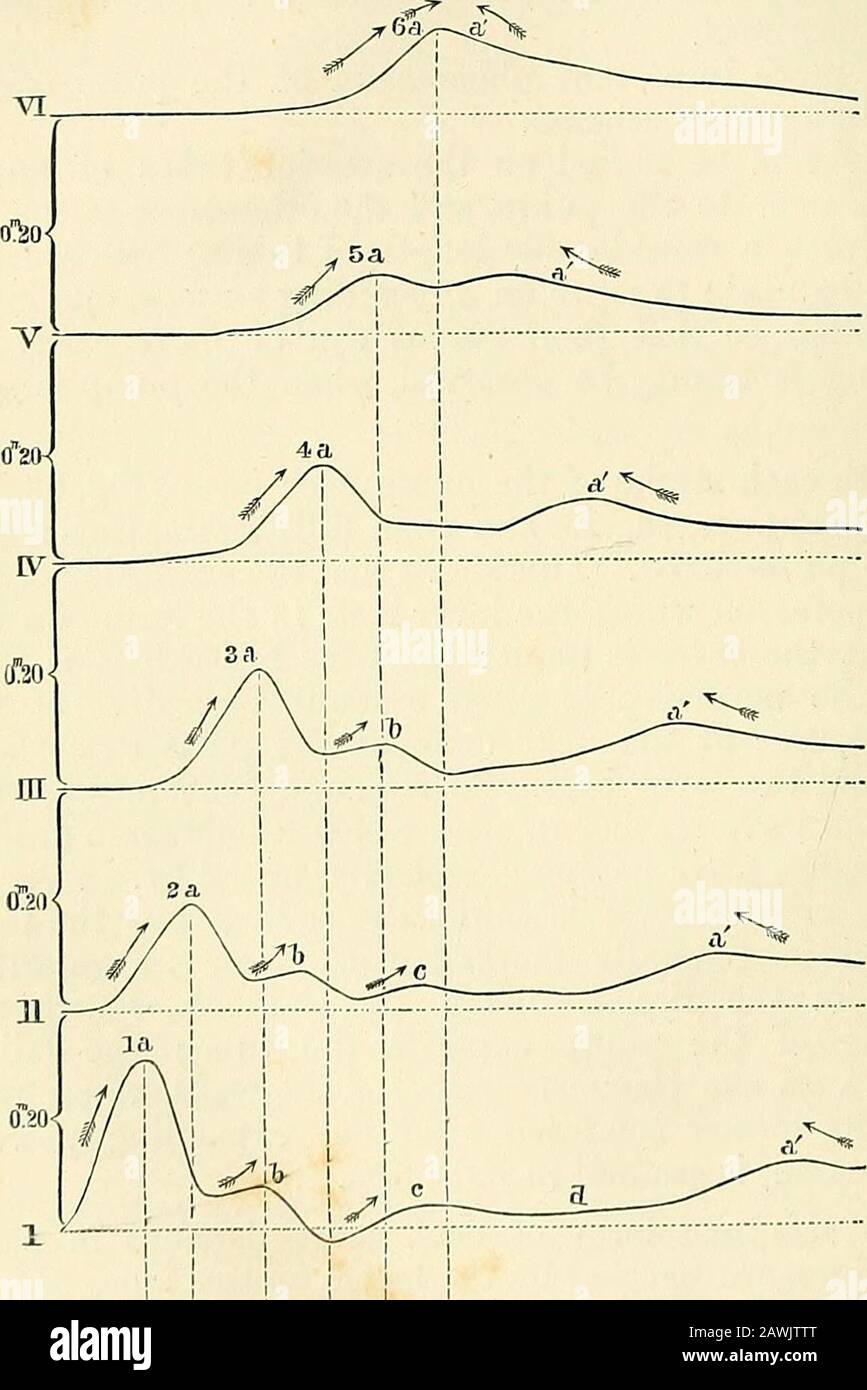A text book of physiology . ortionately diminished.There is a certain pressure, depending on the expansive power ofthe tubing, at which the tracings are best marked. 1 By this is simply meant a system of tubes, along which fluid can be driven by apump worked at regular intervals. In the course of the tubes a (variable) resistance isintroduced in imitation of the capillary resistance. The tubes on the proximal side ofthe resistance consequently represent arteries ; those on the distal side, veins. 2 Cf. Marey, Trav. d. Lab. i. (1875) p. 100. ....... 158 THE PULSE. [Book i. 3. If the points of t

Image details
Contributor:
The Reading Room / Alamy Stock PhotoImage ID:
2AWJTTTFile size:
7.1 MB (224.3 KB Compressed download)Releases:
Model - no | Property - noDo I need a release?Dimensions:
1291 x 1935 px | 21.9 x 32.8 cm | 8.6 x 12.9 inches | 150dpiMore information:
This image is a public domain image, which means either that copyright has expired in the image or the copyright holder has waived their copyright. Alamy charges you a fee for access to the high resolution copy of the image.
This image could have imperfections as it’s either historical or reportage.
A text book of physiology . ortionately diminished.There is a certain pressure, depending on the expansive power ofthe tubing, at which the tracings are best marked. 1 By this is simply meant a system of tubes, along which fluid can be driven by apump worked at regular intervals. In the course of the tubes a (variable) resistance isintroduced in imitation of the capillary resistance. The tubes on the proximal side ofthe resistance consequently represent arteries ; those on the distal side, veins. 2 Cf. Marey, Trav. d. Lab. i. (1875) p. 100. ....... 158 THE PULSE. [Book i. 3. If the points of the two levers be placed exactly one underthe other on the recording surface, it is obvious that, the levers beingalike except for their position on the tube, any difference in timebetween the movements of the two levers will be shewn by aninterval between the beginnings of the curves they describe, if therecording surface be made to travel sufficiently rapidly. If the movements of the two levers be thus compared, it will be. ^AAAA/VWVVVVWVV 50 0 Fig. 33. Pulse-curves described by a series of spbygmographic levers placed at in-tervals of 20 cm. from each other along an elastic tube into which fluid is forced by thesudden stroke of a pump. The pulse-wave is travelling from left to right, as indicatedby tbe arrows over tbe primary (a) and secondary (b, c) pulse-waves. The dotted verticallines drawn from tbe summit of tbe several primary waves to the tuning-fork curve below, each complete vibration of wbicli occupies , , , ; see., allow tbe time to bo measured whichis taken up by the wave in passing along 20 cm. of the tubing. The waves a arewaves reflected from the closed distal end of the tubing; this is indicated by thedirection of the arrows. It will be observed tbat in the more distant lever VI. thereflected wave, baving but a slight distance to travel, becomes fused with the primarywave. (From Marey.) Chap, iv.] THE VASCULAR MECHANISM. 159 seen that the far lever (Fig. 33, II.) c